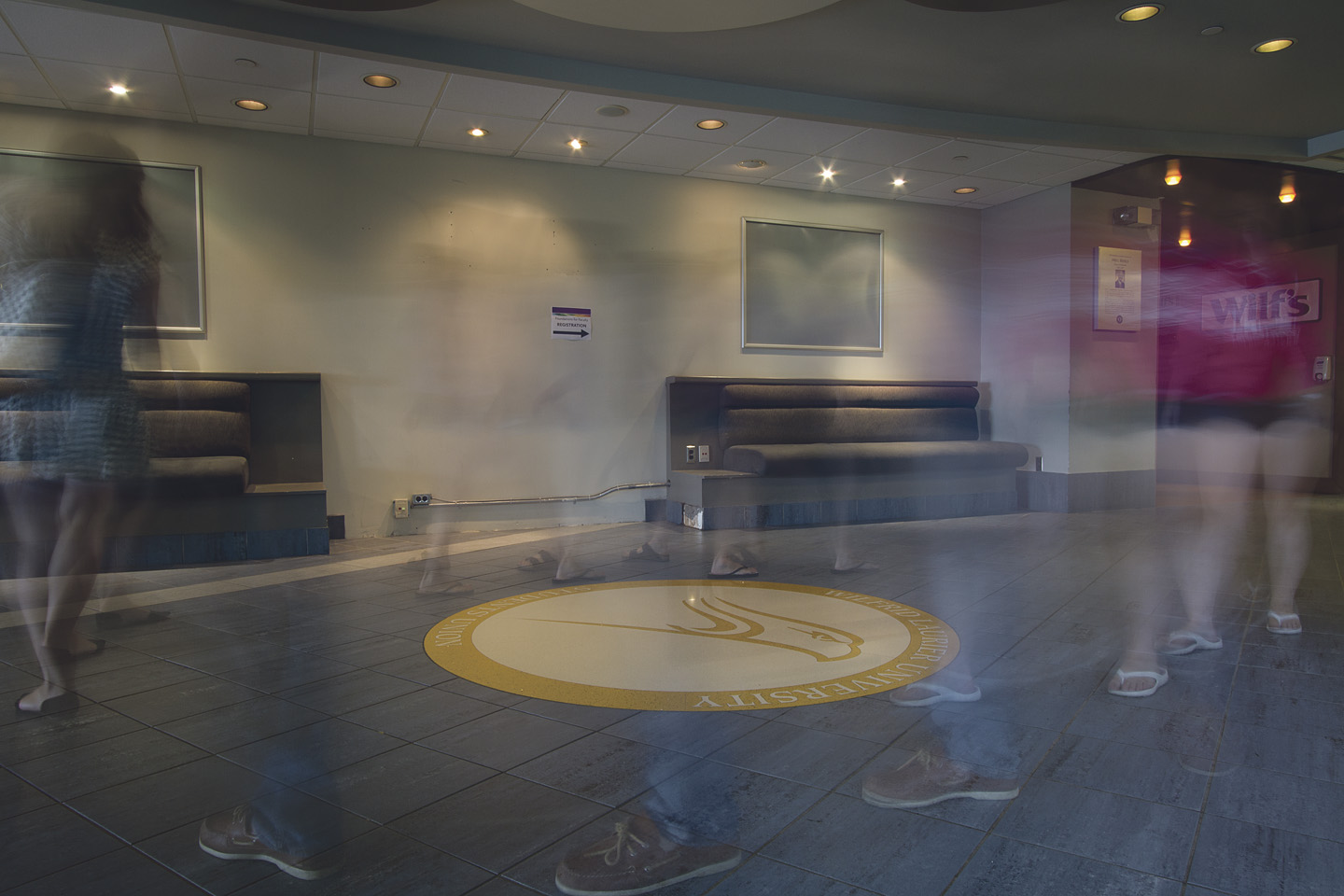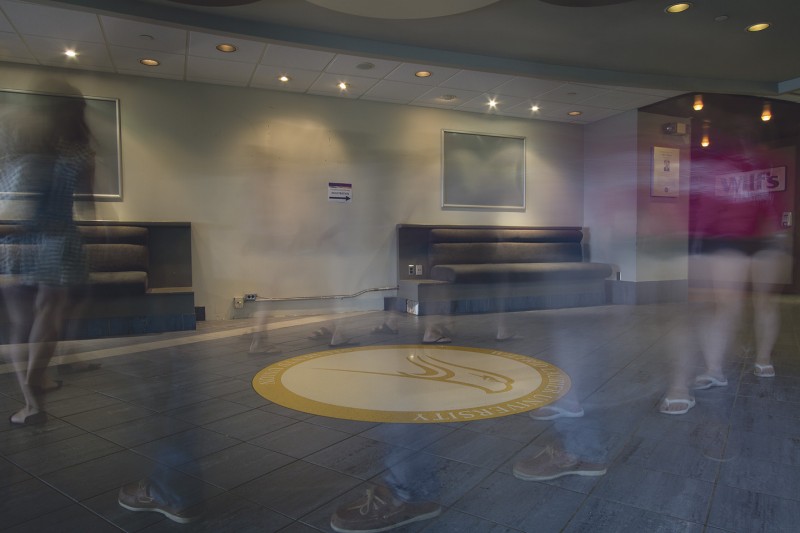State of the Hawk 2022


On April 1st, 2019, Laurier Alumni published an article stating that the Students’ Union had voted to install a protective glass dome around the Golden Hawk in the Fred Nichols campus center (FNCC) to prevent it from being stepped on. Of course, this was only an April fools’ joke. After all, implementing physical barriers to prevent people from stepping on the hawk defeats the whole purpose of the tradition in the first place.
Fast forward to the Autumn of 2022; ironically, this April fools’ joke became a reality. I saw a sign in front of the Hawk informing passersby about the tradition. Later, I saw three belt barrier poles surrounding the hawk, forcing people to walk around it. After COVID, many students are only now on campus for the first time, many of whom were or are oblivious to the tradition.
Some Laurier students are unaware of the tradition’s origins. Laurier is a relatively young university. This is largely why we’ve lacked traditions compared to other, more established universities. In 1996, the Students Union took the unorthodox step of manifesting a tradition themselves.
That year the golden hawk was installed on the floor of the FNCC with the explicit purpose of starting a tradition. While university traditions are typically created more organically, few could argue with the hawk’s success. Everyone knew that you did not step on the hawk, lest you have a Laurier comrade scold you and tell you to kiss it in forgiveness.
The hawk has not been without controversy, though., This controversy perhaps most infamously during its removal during the 2008-2009 semester. The FNCC was being retiled; unexpectedly, the hawk was also tiled over. This sparked outrage among the Laurier faithful and prompted the student’s union BOD to allocate nearly $11,000 towards its return. While many were happy to see the hawk retake its rightful place, others thought the money could’ve been spent on matters more pressing than a piece of floor you aren’t supposed to step on.
26 years later, the tradition has never been more vulnerable. How well is the practice being followed today? There’s only one way to find out.
On three separate occasions, I sat in front of the hawk for an hour and tracked how many people respected the tradition and how many committed the immoral sin of stepping on the hawk. These times were Nov. 9 from 1:47 PM until 2:47 PM, Nov. 16 from 11:40 AM until 12:40 PM and Nov. 18 from 4:00 PM until 5:00 PM. If you passed the hawk during these time frames, you were likely a part of this study.
A couple of notes; Firstly, I counted anyone stepping on the circle as someone who stepped on the hawk. Additionally, if an effort was made to avoid the hawk, but they barely stepped on it, I did not count this. As a final note, it’s likely that my findings may have been off by a percent or two due to crowds and other unforeseen circumstances.
I counted 1031 situations where someone could’ve stepped on the hawk. Of those 1031 situations, the hawk was stepped on 97 times. This means that, in situations where the hawk could’ve been stepped on, about 9.4% of the time, it was stepped on. I found that most of these incidents came from people distracted by their phones and people in groups where the flow of conversation drew attention away from the hawk.

In approaching the hawk, you can come from two directions, from the WILF’s takeout desk or the stair/elevator from the other side. Now, let me tell you something about those abhorrent individuals that came from the side of the stairs. Despite sporting 108 fewer hawk-stepping situations, they still stepped on it seven more times overall than those who came from the desk. For shame!

For the latter two observations I performed (accounting for 521 potential hawk-stepping situations), I kept track of a few other statistics. I counted 15 reminders given, which resulted in five close calls of stepping on the hawk being avoided. I also counted five jokes made, most of which were people pretending like they were about to step on the hawk before pulling their foot back. 0 of these jokes were funny. I observed three instances of people deliberately disrespecting the hawk by stepping on it intentionally.

This study is by no means perfect, but it does grant interesting insight into the state of the hawk in 2022. I’d be curious to see a year-by-year comparison of how many people follow the tradition. Honestly, I expected more people to be stepping on the hawk, but it seems like the preventative measures positively affected the tradition’s continuation. With more people now aware of the tradition, I expect 9.4% to descend steadily as the years go on.

